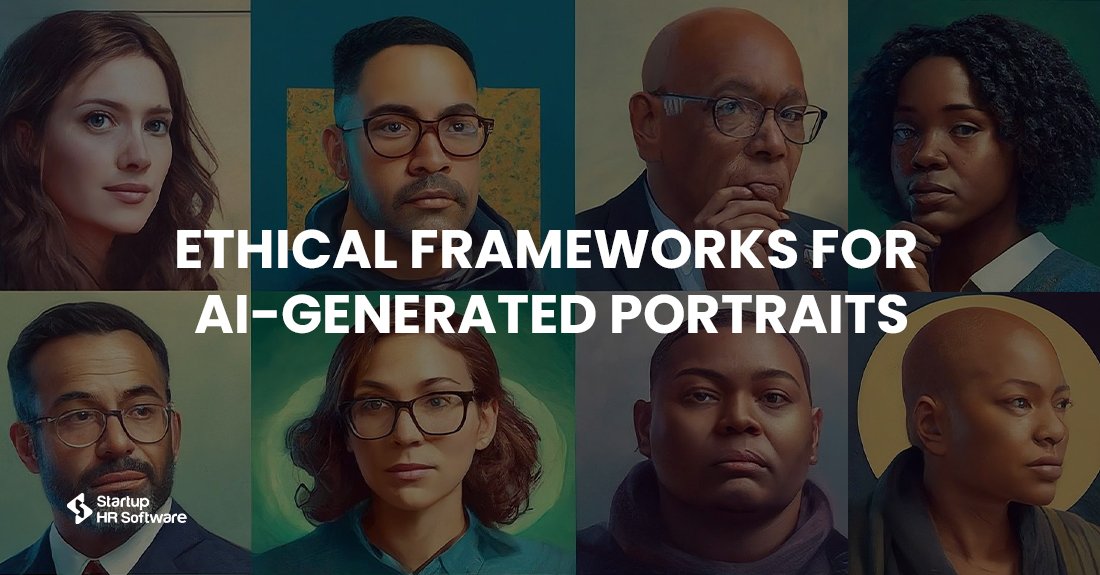
In an era where technology intersects with creativity, AI-generated portraits have emerged as a groundbreaking tool, revolutionizing industries ranging from marketing to entertainment. The advent of AI headshot generators has sparked debates surrounding their ethical implications, particularly in professional settings where traditional headshots have long been the norm.
This blog delves into the ethical frameworks surrounding AI-generated portraits, specifically focusing on the concerns of developers. We’ll explore key areas like bias, privacy, ownership, and transparency, offering practical considerations for developers to ensure their AI tools are responsible and ethical.
The Rise of AI Headshots: A Boon or Bane?
AI headshot generators work by analyzing vast datasets of existing professional portraits. They learn the underlying patterns and aesthetics associated with professional headshots and can then generate realistic, high-quality portraits based on user input.Moreover, AI headshots offer unparalleled convenience, allowing users to create customized portraits quickly and affordably. This technology offers several advantages:
1. Accessibility: Traditional professional headshots often require scheduling appointments, coordinating with photographers, and investing significant time and resources. AI headshot generators democratize access to high-quality portraits, enabling individuals from diverse backgrounds to obtain professional imagery effortlessly.
2. Consistency: Human photographers may encounter variability in lighting conditions, posing preferences, and editing styles, leading to inconsistencies in the final output. AI headshot generators ensure consistency across all portraits, maintaining a cohesive visual identity for individuals or organizations.
3. Cost-Effectiveness: Commissioning professional photographers for headshots can incur substantial expenses, especially for businesses or individuals requiring multiple images. AI headshot generators offer a cost-effective alternative, eliminating the need for recurring photography sessions and minimizing financial barriers.
However, alongside these benefits, there are significant ethical concerns that developers need to acknowledge and address.
Navigating the Ethical Landscape: Key Considerations for Developers
Developing an AI headshot generator requires careful consideration of several ethical principles. Here’s a breakdown of the crucial areas developers should focus on:
1. Bias and Fairness: Mitigating Algorithmic Prejudice
AI systems are only as good as the data they’re trained on. Unfortunately, datasets can inadvertently encode societal biases, leading to discriminatory outputs. For example, an AI trained on a dataset primarily featuring Caucasian professionals might struggle to generate realistic headshots for people of color.
Considerations for Developers:
Data Diversity: Prioritize diverse datasets that represent a wide range of ethnicities, genders, ages, and physical appearances.
Algorithmic Fairness Tools: Implement techniques to identify and mitigate bias within the AI model. This could involve employing fairness metrics during training and testing phases.
User Control: Allow users to choose from various style options that cater to different professional settings and cultural contexts.
2. Privacy and Data Security: Protecting User Information
AI headshot generators often require users to upload photographs. This raises concerns about how this data is stored, used, and potentially shared.
Considerations for Developers:
Clear Data Practices: Implement a transparent data policy outlining how user data is collected, stored, and used.
User Consent: Obtain explicit user consent before using uploaded photographs for training or other purposes.
Secure Data Storage: Employ robust security measures to safeguard user data from unauthorized access or breaches.
3. Ownership and Copyright: Who Owns the Generated Portrait?
When an AI generates a headshot, who owns the copyright? Is it the user who provided the initial data, or does ownership belong to the developers of the AI model?
Considerations for Developers:
Clear Licensing: Establish clear licensing terms that define the ownership and usage rights of AI-generated portraits. This could involve offering different licensing options depending on user needs.
Transparency on AI Contribution: Acknowledge the role of the AI model in creating the headshot while respecting the user’s input and creative choices.
4. Transparency and Explainability: Demystifying the AI Process
For users to trust AI-generated headshots, they need to understand how the process works. A “black box” approach can generate mistrust and limit user control.
Considerations for Developers:
Explainable AI Techniques: Explore tools and techniques that allow users to understand the factors influencing the AI-generated portrait.
User Control Over Style and Output: Provide users with options to influence the style and outcome of the generated headshot.
Beyond Considerations: Building Trustworthy AI Tools
Addressing these ethical considerations is crucial for developers to build trust and encourage responsible adoption of AI headshot generators. Here are some additional recommendations:
Open Dialogue with Stakeholders: Engage in open discussions with ethicists, artists, and potential users to identify and address emerging ethical concerns.
Continuous Improvement: Stay updated on the evolving ethical landscape surrounding AI and strive to continuously improve your AI models to mitigate bias and ensure fairness.
Focus on Human-AI Collaboration: View AI as a tool that can augment human creativity, rather than replacing photographers or artists altogether.
The development of AI headshot generators presents a fascinating opportunity to democratize professional portraiture. By adhering to ethical principles and prioritizing user trust, developers can ensure this technology empowers individuals and businesses.
Professional Headshots in the Digital Age:
In professional contexts, the transition from traditional to AI-generated professional headshots necessitates a reevaluation of established norms and practices.
Authenticity vs. Perfection: While traditional headshots may emphasize authenticity and individuality, AI-generated portraits prioritize aesthetic perfection and symmetry. Developers must strike a balance between enhancing visual appeal and preserving the unique characteristics and identities of subjects.
Adaptability: The dynamic nature of digital platforms and social media requires headshots to be versatile and adaptable across various contexts and resolutions. AI headshot generators offer flexibility in customization, enabling users to tailor portraits to specific platforms or branding requirements.
Ethical Representation: Professional headshots play a crucial role in shaping perceptions and first impressions. Developers should incorporate ethical guidelines into AI models to ensure accurate representation and avoid reinforcing biases or stereotypes.
Conclusion
In conclusion, the ethical frameworks guiding the development and deployment of AI-generated portraits are integral to navigating the intersection of technological innovation and societal values. By embracing transparency, inclusivity, and accountability, developers can harness the transformative potential of AI headshot generators while upholding ethical standards and safeguarding user trust. Ethical innovation requires a collaborative effort among stakeholders to address emerging challenges, promote responsible usage, and ensure that AI technologies serve the collective good. As we chart a course towards an ethically robust future, let us strive to balance innovation with ethics, empowering individuals and communities to thrive in a rapidly evolving digital landscape.




